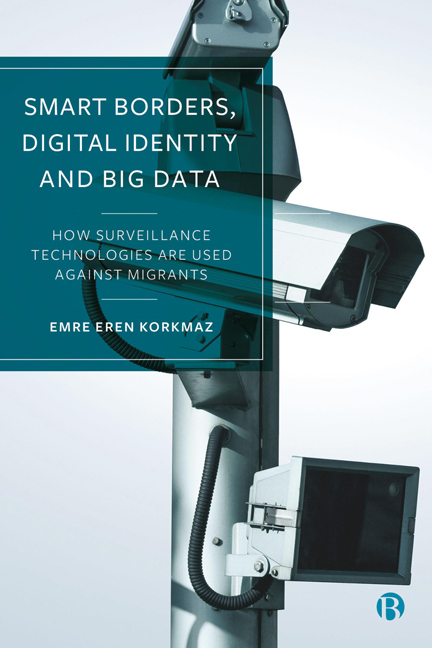 Smart Borders, Digital Identity and Big Data
Smart Borders, Digital Identity and Big Data Book contents
- Frontmatter
- Dedication
- Contents
- List of Abbreviations
- About the Author
- Acknowledgements
- Introduction: Canaries in the Coal Mine
- 1 Migration and (Surveillance) Capitalism
- 2 Migration and (Big) Data Analysis
- 3 Smart Borders
- 4 Digital Identity and Surveillance Capitalism
- Conclusion: How Can We Resist?
- Notes
- References
- Index
Conclusion: How Can We Resist?
Published online by Cambridge University Press: 27 March 2024
- Frontmatter
- Dedication
- Contents
- List of Abbreviations
- About the Author
- Acknowledgements
- Introduction: Canaries in the Coal Mine
- 1 Migration and (Surveillance) Capitalism
- 2 Migration and (Big) Data Analysis
- 3 Smart Borders
- 4 Digital Identity and Surveillance Capitalism
- Conclusion: How Can We Resist?
- Notes
- References
- Index
Summary
I want to use this opportunity to briefly summarize our discussion until now, and provide some lasting examples, to contribute to my overall argument. In this book, I have examined the use of surveillance technologies in migration, border management and humanitarian aid, with the aim of explaining contemporary capitalism’s mainstream approach to migration at a global level and the motivations behind the investments of tech companies in these fields. What is critical here is that the development and implementation of surveillance technologies in migration and border management have repercussions that extend far beyond these fields. Given the far-reaching effects of these technologies – encompassing lie detection and military robotics, and the prediction and prevention of mass movements – it is evident that they will soon have consequences for humanity as a whole.
In gaining an understanding of this potential, we also recognize that this topic is directly related to the evolution and future of global capitalism, and that surveillance capitalism is not simply a business model. The capabilities provided by these surveillance technologies and their use for mass surveillance have become an intrinsic component of contemporary capitalism and are actively tested on people on the move.
This process is led by an oligarchic structure based on close cooperation between the security, intelligence and financial bureaucracies of a small number of advanced capitalist countries and a small number of tech producers, military organizations and financial companies. Donor countries provide funding in the name of humanitarian aid, and, through academic projects or research and development, new and usually speculative surveillance technologies are developed using this public money. These are then tested on migrants and refugees in different countries by security bureaucracies or various organizations such as UN agencies, and products found to be successful and effective are commercialized and marketed to different states. The reason I refer to this as an oligarchic structure is that there is a network of people operating on different platforms in a small number of countries, including the US, EU, UK and Israel, who work together, share their experiences and frequently move among companies, and the decisions made by this network are implemented at a global level.
- Type
- Chapter
- Information
- Smart Borders, Digital Identity and Big DataHow Surveillance Technologies Are Used Against Migrants, pp. 116 - 132Publisher: Bristol University PressPrint publication year: 2024
